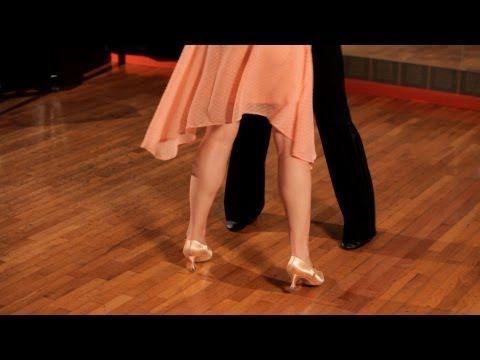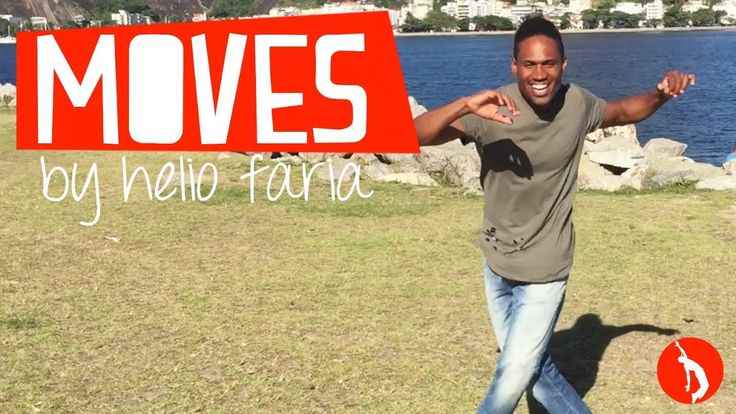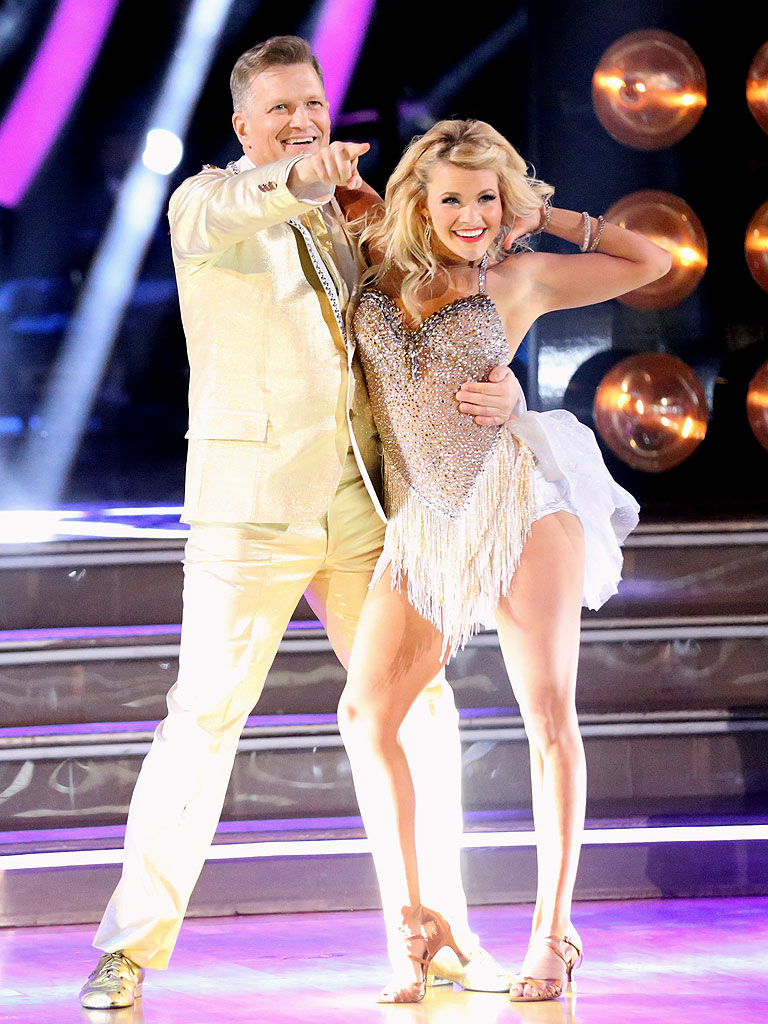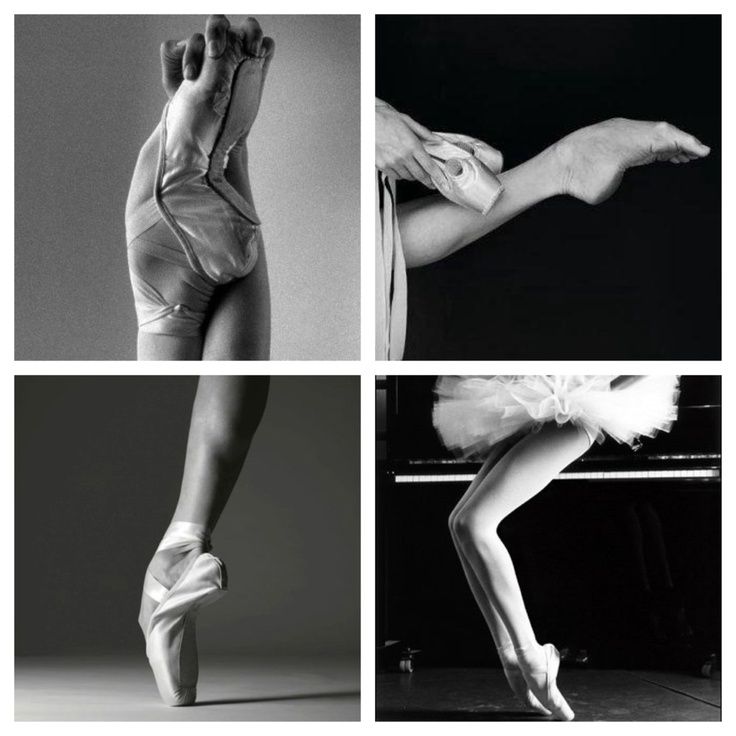How to dance waltz steps
Learn Basic Steps For Waltz
Waltz is an elegant, nearly universal dance, perfect for weddings, or almost any social occasion. It's not as hard to learn as most people think.
- Basic steps
- Instructions & Diagrams
- Video
- Recommended Video Lessons »
Quick intro
Waltz dates back to the late 17th century Europe, but has never really been out of fashion and clearly stood the test of time. It should probably be one of the first ballroom dances you learn.
It is a smooth and graceful dance with long, flowing movements, characterized by rise & fall motion. It has a unique 3/4 timing and a simple rhythmic pattern which blends with the music. You can start waltzing very quickly by just learning the simple box step.
Basic steps
The basic step for waltz is a box step. It's named after a pattern it creates on the floor (box or square) and forms the foundation of the dance.
A box step can be divided into two parts - a forward half box and a backward half box. Each half box has three steps - a step forward or backward, a step to the side, and a step to close the feet together.
The leader starts with the left foot and executes a forward half box, followed by a backward half box. The follower performs the opposite – she starts with the right foot and executes a backward half box, followed by a forward half box.
The basic box step pattern uses three counts - slow, quick, quick, which is repeated twice to create the box step. Timing is 1,2,3,1,2,3 or 1,2,3,4,5,6.
Instructions & Diagrams:
When dancing waltz someone has to lead and someone has to follow. Usually the man will lead and the woman will follow.
Men's Steps:
- Step forward with the left foot
- Right foot step sideways to the right
- Bring your left foot next to your right foot
- Step back with the right foot
- Step back sideways with the left foot
- Bring your right foot next to your left foot
Lady's Steps:
- Step back with the right foot
- Left foot step sideways to the left
- Bring your right foot next to your left foot
- Step forward with the left foot
- Step forward sideways with the right foot
- Bring your left foot next to your right foot
Video
In this video Leon and Kim will show you the basic box step. You will also get important tips on rise & fall movement which characterizes this dance:
You will also get important tips on rise & fall movement which characterizes this dance:
more videos »
Once you've mastered the basic box step, it's time to start rotating that box. It will usually be rotated to the left (counterclockwise), so it's called the Left Box Turn. It's quite simple: with each half box, you turn 1/4 of the turn to the left. After two boxes (or four half boxes) you will complete the turn and end up where you began. Then start all over again.
Ok, so now that you know the basic box and how to rotate it, lets continue with basic progressive. Here, as the name implies, the leader will always be moving forwards and the follower backwards. This will enable you to move around the dance floor instead of just dancing on the spot. Here is a clip from Learn & Master Ballroom Dance course that will show you in detail how it's done:
Where to go next?
Now that you know the basics, what's your next step (pun intended ;)? To go to the next level, we recommend one of the video training programs. Here are our recommendations »
Waltz Dance Steps
Thomas Wilson Correct Method of German and French Waltzing 1816, showing nine positions of the Waltz.Photo by unknown engraver / Public domain
How to Dance the Waltz
Waltz is a smooth dance, traveling around the line of dance. It is characterized primarily by its rise & fall action.
The shoulders move smoothly, parallel with the floor, not up and down.
The head should turn in the direction of the turn, otherwise the man's head is upright and looking over the right shoulder of the lady.
The American Waltz is similar to the International style except it has both open and closed dance positions. This allows the American style dancer a unique freedom of expression, including the ability to showcase character and theatrical presentation.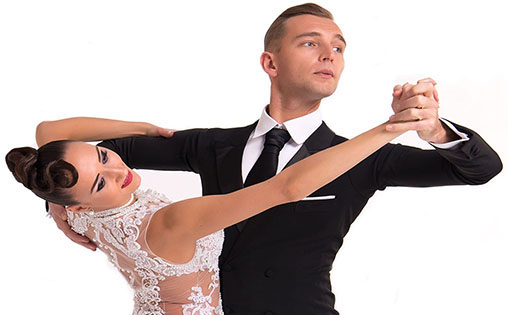
The slow waltz is danced to music written in 3/4 meter with 30 - 32 measures per minute.
Rise and Fall in Waltz
The rise and fall is unique to the waltz. If possible, all the the steps in the waltz should be long.
On the first step forward, the weight is taken on the heel, then on to the ball of the foot.
A gradual rise to the toes should be started at the end of the first beat, and continued to the second and third beat of each bar of music.
Lower to the normal position at the end of the third beat by lowering to the heel of the foot which is carrying the weight.
Waltz Left Foot Change
Man's foot position
Waltz dance step - Left foot changeStep diagram by Centralhome.com
Rhythm - One, two, three.
Waltz Right Foot Change
Man's foot position
Waltz-Steps-Right-Foot-ChangeStep diagram by Centralhome.com
Start position - facing line of dance)
Rhythm - One, two, three.
Waltz Left Box
The basic waltz steps looks like a box on the floor.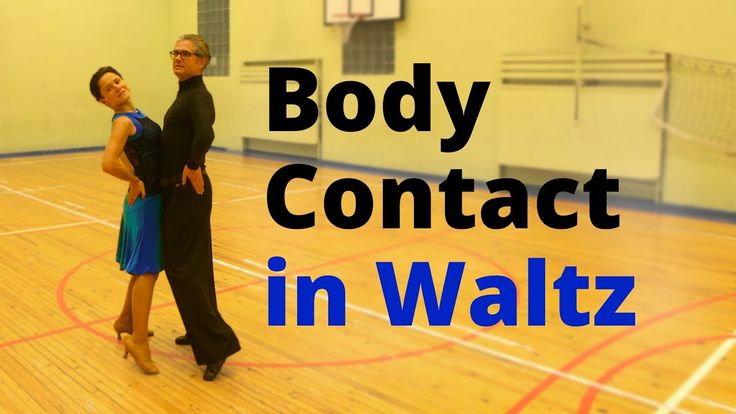 The basic step is called the Left Box. It is a combination of the Left Foot Change (forward) and the Right Foot change (backwards or against the line of dance)
The basic step is called the Left Box. It is a combination of the Left Foot Change (forward) and the Right Foot change (backwards or against the line of dance)
The Box Step can also have a slight amount of turn, from 1/8 to 3/4 turn. The turn is used to turn corners or stay in a small area on a crowded nightclub dance floor.
Man's foot position
Waltz Box Step or Left Box StepStep diagram by Centralhome.com
Man starts and finished facing Line of Dance
Rhythm - One, two, three. One, two, three.
The man is in closed dance position in front of the woman, facing line of dance. The woman is slightly to the right.
Man's Steps
1. Step forward with the LF.
2. Step forward with the RF so that right foot is parallel to left foot.
3. Bring the LF to the RF.
4. Step back with the RF.
5. Step back with the LF so that the left foot is parallel to right foot.
6. Bring the RF to the LF.
Woman's Steps
1.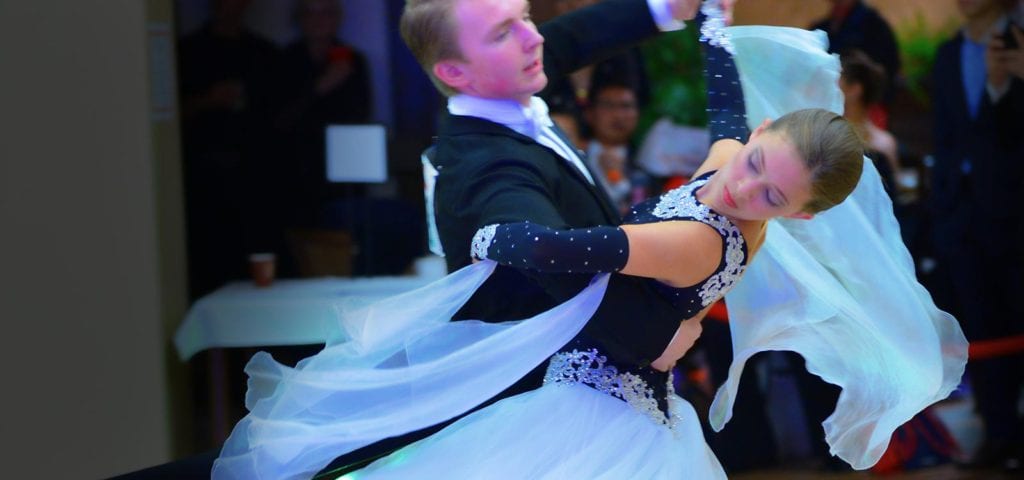 Step back with the RF.
Step back with the RF.
2. Step back with the LF so that the left foot is parallel to right foot.
3. Bring the RF to the LF.
4. Step forward with the LF.
5. Step forward with the RF so that right foot is parallel to left foot.
6. Bring the LF to the RF.
Waltz Forward Progressive
Man's foot position(left foot change and right foot change)
Waltz step - forward progressiveStep diagram by Centralhome.com
Start position (face line of dance)
Rhythm - One, two, three.
Waltz Promenade Step
Man's foot position
Waltz step - promenadeStep diagram by Centralhome.com
Rhythm - One, two, three.
About the Author
Jake Fuller is a staff writer for Centralhome.com.
Recommended for you
More Waltz Steps - Left turn, Right turn, Whisk (man's and lady's part)
Waltz History - How old is Waltz?
Waltz Syllabus - Waltz International Standard Ballroom Dance.
International versus American Dancing - Differences in style.
Share
Previous in Steps: Polka Steps
Next in Steps: Waltz Steps 2
description of technique and recommendations. Learning to dance the waltz
The waltz is not in vain considered the king of dances. He is always present at all events, various receptions and, of course, at the prom.
But everyone thinks about it at some point, because the time of the prom is getting closer and closer, and there is simply no time to spend energy taking lessons from professionals. In this case, you can learn to dance the waltz yourself, at home.
But unlike the last century, when being able to dance the waltz was a mandatory requirement for everyone, now there are not so many girls and boys who know this type of dance.
First, consider the basic movements. Naturally, before you start learning to dance the waltz, you need to find a suitable partner who also wants to learn. Absolutely all movements occur on the account: one-two-three-times. This one is very important to remember, because when dancing you need to keep a good pace.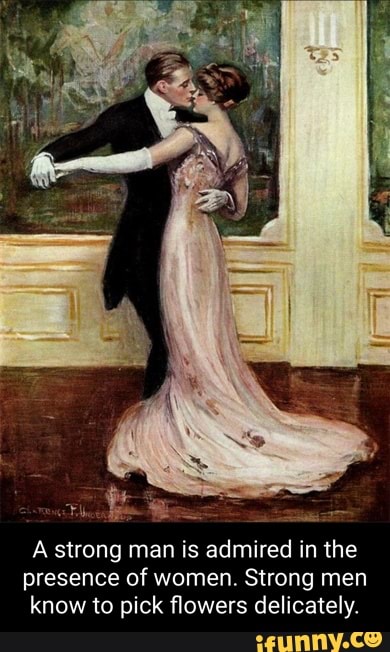
As for the rotation, if you look from the side, it may seem somehow complicated and incomprehensible, but in fact the rotation goes counterclockwise along the square.
As for the steps, it is also worth noting a small nuance - for each corner of a simple square there are two small steps and one large one. This is very important to remember and keep in mind so as not to get confused.
I would also like to note, once again, that the rotation in the waltz is one of the most important components. You always need to turn to the right side, and if you look from a purely mathematical point of view, then each turn consists of two half-turns, which are equal to one hundred and eighty degrees.
Now let's look at the steps. To start the turn, you need to take one step forward with your right foot. In this case, it is very important to make a turn to the right in a clockwise direction. Next, you should take a step already with your left foot, but at the same time continue to carry out the already started turn, after which the left foot should be placed on half-toes.
And finally, the right leg should be, then attached to the left, after which both legs should stand on a full foot. This is the first part of the square you will make.
To complete the second part, you need to do almost the same thing, only in reverse.
That is, first you need to take a step back with your left foot, and this step must be done diagonally and all the weight must be transferred to the left foot.
After that, the right foot is transferred over the heel of the left.
Next, a half-fingers turn is performed, after which you need to start making a square again.
At the same time, it is very important not to forget constantly, to count “one-two-three-times”, without this, it will be very easy to stray and lose pace, which is an equally important component of the waltz.
If you have never danced a waltz in your life, then you have definitely lost a lot. But do not be upset. Because it's never too late to learn. The most important thing is desire and effort. A farewell school waltz, which will forever remain in the memory of all of us for many years, a wedding waltz performed by two loving people will bring a lot of pleasure and give a great mood. The waltz is always danced by artists at concerts, athletes at various dance tournaments, as well as all those who are just interested in it.
A farewell school waltz, which will forever remain in the memory of all of us for many years, a wedding waltz performed by two loving people will bring a lot of pleasure and give a great mood. The waltz is always danced by artists at concerts, athletes at various dance tournaments, as well as all those who are just interested in it.
Classics are eternal
Waltz is a beautiful, gentle dance, which can be based on any story: a first date, a dramatic love story with parting, warm relationships that have been preserved over many years of living together. The waltz is danced by children at matinees, young couples at school balls and registry offices, and adults and the elderly at anniversaries and wedding anniversaries or just for fun. For everyone, it has its own meaning, while remaining the single most beautiful, classical dance of many eras.
The history of the waltz begins with the combination of the German peasant dance Lendler, distinguished by its exquisite simplicity and spontaneity, and the Provencal Volta dance with jumps and rotations.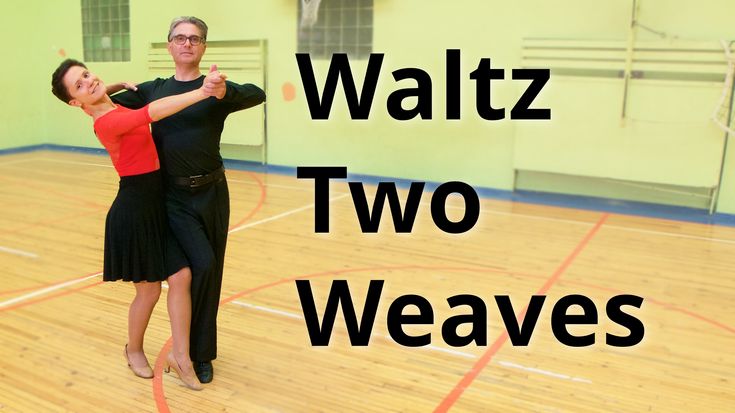 Translated from German, the name of the dance "walzen" means "circle" or "rotate". The birthplace of the waltz is Vienna in the 80s of the 18th century. Viennese waltz is lively and intense due to the frequently changing tempo and rhythm, and the constant alternation of left and right turns. Today there are many varieties of waltz. These are the Viennese waltz, which is called any fast form of dance, the classical waltz performed in closed positions, figured and slow waltzes and the Boston waltz.
Translated from German, the name of the dance "walzen" means "circle" or "rotate". The birthplace of the waltz is Vienna in the 80s of the 18th century. Viennese waltz is lively and intense due to the frequently changing tempo and rhythm, and the constant alternation of left and right turns. Today there are many varieties of waltz. These are the Viennese waltz, which is called any fast form of dance, the classical waltz performed in closed positions, figured and slow waltzes and the Boston waltz.
Waltz: first lessons
In order to learn how to dance the waltz, you need to love it and want to "dissolve" in it. Choosing a partner (partner) who is visually and emotionally similar to each other is the main key to success in the waltz, as in any dance.
The main figure of the waltz is a full turn with three steps in each measure, performed mainly in a closed position. To begin with, each partner needs to master this turn individually, separately from each other. To make the turn smooth and sliding, you need to direct the entire body weight to the center of the legs.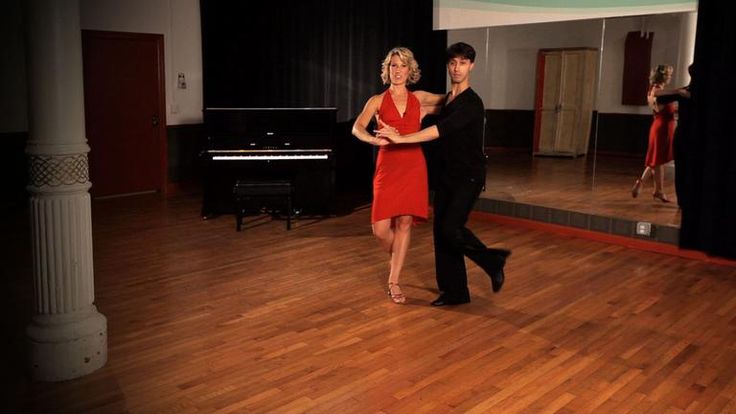
Try the first steps preferably without music, under your own account or with a partner's account, this will give the main turn more clarity and confidence.
The first step on the count of "one" is the widest compared to the next two. The torso should be kept straight, shoulders straightened, head slightly raised and look in front of you. It is advisable not to look at your feet during the first lessons, so as not to relearn later. When turning clockwise on the count of "two" and "three", the turn should turn the body 180 degrees from the original location.
If the first turn started with the right foot forward, then the second must be with the left foot back. Thus, the steps lead in a straight line. When music is applied and partners are connected, the main turns of the waltz will themselves begin to “smooth out”, forming a large circle.
When moving to paired dance lessons, the partner places his right hand slightly below the partner’s left shoulder blade, keeping the elbow at an angle of 90 degrees in relation to his own body, and his left hand is carried out to the side just below eye level and acts as a support for her right hand .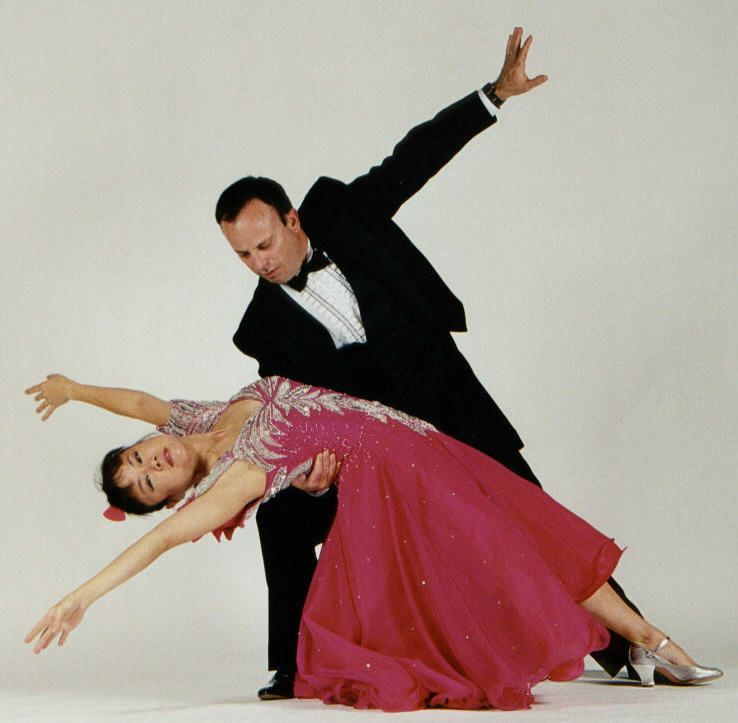
The partner puts her left hand on her partner's shoulder, slightly pressing on him to be more obedient in the dance, and looks over her, turning her head to the left and slightly upward. At the same time, she keeps her shoulders straight and slightly takes them back. This position gives her balance, and the partner's confidence in controlling her in the dance. Partners must "glide" in sync and smoothly to give the waltz its inherent grace and grandeur.
When you feel confident in the basic elements and your position in relation to each other, at the next stages of improving the waltz, you can claim a more complex staging and improvisation.
With good dedication, a “personal” waltz can become professional, extraordinary and unforgettable.
On my own, from scratch, without the help of a professional teacher, an experienced dancer, or at least a person who knows how to do it, it is impossible.
But is it really so? Modern people have many things that can help them master this or that occupation and at the same time not leave their own home.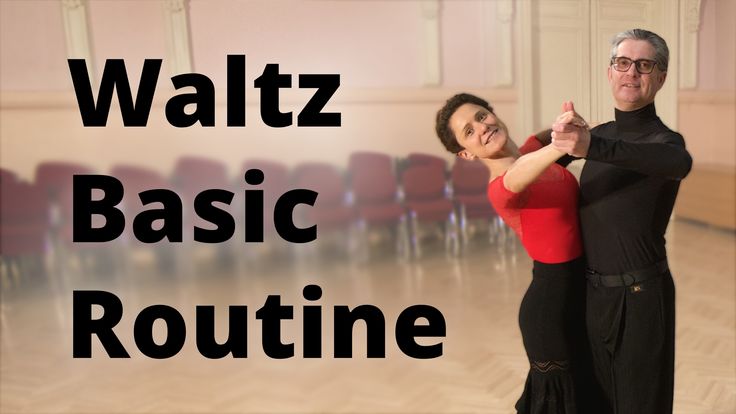 We are talking about the Internet, television panels, smartphones and other technical benefits that make distance learning possible.
We are talking about the Internet, television panels, smartphones and other technical benefits that make distance learning possible.
How do they dance?
Waltz is distinguished by the use of time signature in three quarters. That is, each measure is “one, two, three”. With emphasis on the intonation "time".
In movement, this is expressed in the fact that the measure is equal to three steps. In how to waltz, mastering the rhythm is the most important thing. Without understanding the size and the habit of counting the beats inside yourself, nothing will work.
What is a waltz like?
Usually people who are interested in how to learn to dance the waltz at home on their own do not quite understand what exactly they want to be able to perform.
There are several types of dance:
- fast or Viennese;
- slow;
- figured;
- Argentinian or waltz in tango rhythm.
Each of the options has its own characteristics, and before you learn to dance the waltz, you need to clearly understand what type of movement you want to master.
Viennese
As a rule, saying “waltz” means exactly the fast Viennese ballroom dance. It is included in the competition programs, it is danced in films, this option is the most famous among people who are not in contact with the choreography.
And it is also the most difficult. In this type of dance, 60 measures fit into a minute. Before you learn how to dance the waltz at home, or rather start this process, it makes sense to try to say out loud the size with a stopwatch.
"One, two, three" should sound 60 times in one minute, while not losing your breath and losing your breath. If everything worked out - the Viennese version of the dance can be safely mastered, if not - you need to start with a simpler variety.
Slow
Its difference from the fast dance is only in the rhythm, in this type of dance there are 30 measures, repeating every minute.
For those who are wondering how to learn how to waltz at home, this version of the dance is just perfect.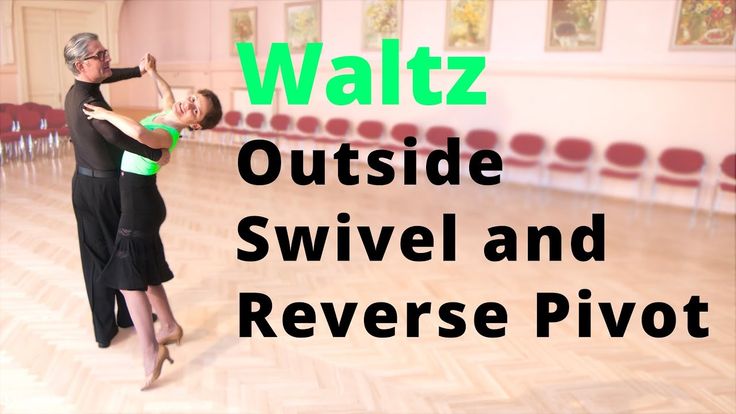 In addition, after it, the famous Viennese is easily mastered.
In addition, after it, the famous Viennese is easily mastered.
Figured
This dance is distinguished by the presence of additional movements - leg swings, kneeling and other things.
If at any show, just in the evening program in a club, a solo waltz is danced on the stage, by one dancer, without a partner, then this is precisely the figure type.
It is not worth starting with this variety, because this dance involves improvisation. And in order to improvise, you need to be able to dance.
Tango
The Argentine waltz is a crazy mixture of Latin American passions and European twists. Starting to learn dancing from him is not a good idea.
The execution of this type of dance requires perfect mastery of both waltz and tango. In addition, it is almost impossible for a beginner who cannot move to master the Argentine variety without a choreographer.
Where to start?
Usually, to such a question, they are expected to hear in response a short story about how to stand, walk, where to look.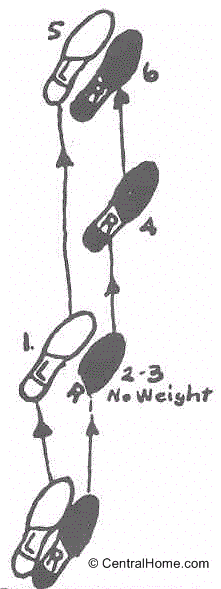 However, in order to learn how to dance the waltz, for beginners, the first step is not to learn the position at all, but to arrange a place to practice.
However, in order to learn how to dance the waltz, for beginners, the first step is not to learn the position at all, but to arrange a place to practice.
It should be as similar as possible to a dance class. You will need a room of at least 20 square meters, as free from furniture as possible. This is necessary, because circling like a princess at a ball in a 10-square room filled with armchairs, cabinets, chairs and tables is quite difficult and only the heroines of Disney fairy tales can do it.
You will need a large full-length mirror, or better yet, a few or wall paneling.
A simple wooden cornice can be used as a warm-up and pre-workout machine, by fixing it well. But if there is no intention to engage seriously, and you are only interested in how to learn how to dance a waltz for an event, such as graduation, then the device of the machine can be neglected.
What to focus on?
When the room is ready, you can begin to study. What to focus on is a personal matter for everyone, someone easily copies the movements while watching an episode from the film, and someone needs detailed explanations with schematic images.
One thing you cannot do in learning to waltz is to follow only the written description of the movements. Movement must be seen. Otherwise, you can learn something completely wrong.
Music is not needed at the initial stage, the movements are learned by counting, which can simply be recorded on a regular smartphone.
Description of the basic positions
Before you start learning the positions, you need to warm up the muscles. Of course, before a home waltz lesson, it is not necessary to sit on the twine. But elementary exercises, with which physical education classes begin in schools, need to be done.
Initial stance - partners stand with their bodies close together, with a straight back. At the same time, the woman holds her back, leaning back a little, due to the deflection in the lower back. The chin is raised, the head is turned to the left, the gaze is directed over the partner's shoulder.
A man supports a woman over the deflection zone, it visually gives the impression that she is leaning on her hand, and without this she will break. The woman's left hand is on the man's shoulder.
The woman's left hand is on the man's shoulder.
When learning alone, you will have to imagine your partner.
Step of the dance - initially the legs are in position "6", which means that the feet are parallel. The one who leads begins to move, stepping from the left foot to "one", then from the right - to "two", and to "three" pulls the left to the right.
The dance is performed with "additional" type of steps. The slave partner simply repeats after the main one. The turn is performed arbitrarily, the minimum interval for it is 2 measures.
As a result, the couple should “outline” a square.
Many people are interested in the term "waltz track". This figure of the dance develops itself, by distributing the turns over the beats.
One of the main difficulties in learning the waltz alone at home is the need to introduce a partner. This is not about emotional complexity, but about tactile difficulty. That is, it is difficult to keep the open palm at the same distance, not to “drop” the elbow.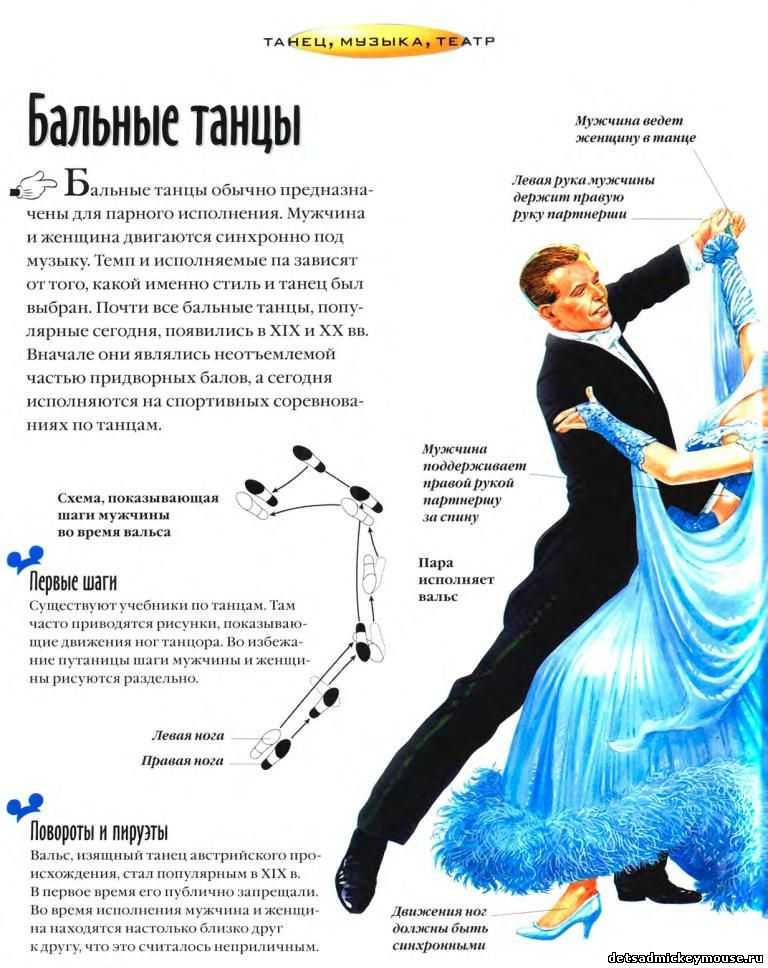 It is no less difficult and constantly to keep your hand on weight, imagining that it lies on someone's shoulder.
It is no less difficult and constantly to keep your hand on weight, imagining that it lies on someone's shoulder.
It is absolutely possible to learn the waltz on your own, although it is difficult. Classroom dancing for couples is always the best solution. But if this is not possible, then it is quite possible to turn on a documentary educational film and try to move in the same way as what is shown on the screen. In the same way, you can use feature films, and even animation.
What is this dance? Let's dive into history. It turns out that the waltz was born in Austria in the 17th century. This dance was danced at the ball. And the name comes from the old German word walzen and meant movement in a circle. Many who managed to fall in love with this dance movement noted its ease, both in learning and in performing.
Waltz became popular and in just one century, as they say, it spread around many countries. Already in the eighteenth century in Germany and France, this dance was performed as one of the leading dances at balls.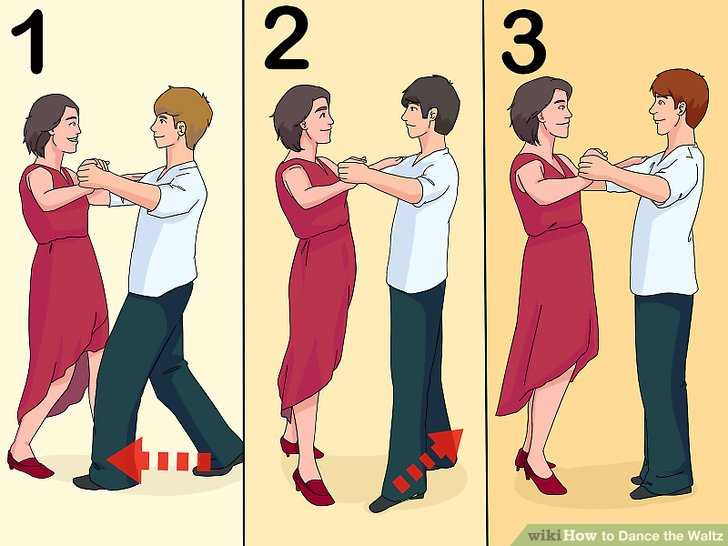 His movements were not the same as we are used to seeing the waltz now. It was performed with an element borrowed from another dance - quadrille. Hands were crossed in the area of shoulders during movement. Such a dance was called "closed".
His movements were not the same as we are used to seeing the waltz now. It was performed with an element borrowed from another dance - quadrille. Hands were crossed in the area of shoulders during movement. Such a dance was called "closed".
Waltz is a musical dance. At the end of the 18th century, not only noble people danced it, it was also loved by the peasants and was performed with a certain musical size - in three quarters.
Every year the waltz became popular, and learning it on your own was not a big deal. That is why dance teachers were very worried that they would be left without work. For example, if to learn a more complex dance - the minuet, it was necessary to learn and hone many different figures of increased complexity, then in order to master the basic movements of the waltz, special skills were not required.
Also this "close" dance was often discussed. There was a period when they wanted to completely ban it, and the reason for this was the discontent of representatives of religious cultures.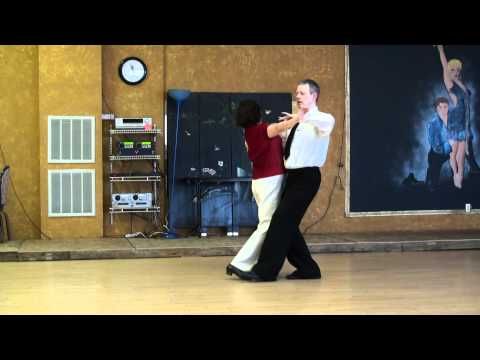 They believed that the dance was indecent, due to the fact that in a couple the dancers stood too close to each other. In Europe, the dance was not accepted for a long time, and in England it was accepted even later.
They believed that the dance was indecent, due to the fact that in a couple the dancers stood too close to each other. In Europe, the dance was not accepted for a long time, and in England it was accepted even later.
At the end of the 19th century, each country danced the waltz in its own way. The main types of waltz were the dance at a slow pace with wide steps. Leg movements were gliding. This type of waltz was called Boston. The second popular performance of the waltz was the delayed dance. Steps during execution were delayed to the music.
These dances are not currently used. The most common are the Viennese waltz and modern.
Waltz and its types
International, American, Contemporary, Viennese, Peruvian, Mexican and Venezuelan. There are many varieties of waltz. I would like to stop the view of the reader of MirSovetov on an unusual dance performance - Western European. This waltz differs almost completely from the traditional waltz because the couple dances in a counter-clockwise direction. And the partners and their hands are free, the backs are slightly rounded. From the outside, such a dancing couple seems stooped.
And the partners and their hands are free, the backs are slightly rounded. From the outside, such a dancing couple seems stooped.
But we, together with Mirsovetov, will consider the main, popular type of waltz in the country, and most importantly, we will learn how to dance the waltz.
Vienna. Very beautiful dance. The main figure of this dance is movement in a circle, that is, whirling. The movements are performed to the music, and 60 movements must be performed per minute. This pace of dance performance is considered optimal. Music for the Viennese waltz is selected especially: passionate, and at the same time - elegant.
The Viennese waltz is usually danced at a ball. The dance is considered elegant, as the movements of partners in the dance are light, sliding. In Europe, it is customary to perform a dance of several movements - from 4 to 8 figures, and in America this dance has been significantly complicated by more than a hundred figures.
How to learn to dance
Waltz is one of the most romantic dances.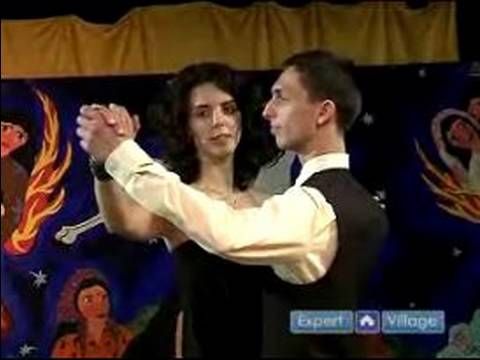 And everyone should be able to dance it. The dance is performed in pairs. Therefore, first of all, you need to take care of the second "dance half".
And everyone should be able to dance it. The dance is performed in pairs. Therefore, first of all, you need to take care of the second "dance half".
It is advisable to start learning the waltz from childhood. But if you have long grown out of this pore, do not be discouraged. You will definitely learn how to dance.
It is advisable to go to a special section where your child and you will be shown the basic dance moves, as well as prepare your body and help develop plasticity.
If you have no time to attend dance classes, and your desire to learn is great, be patient. Be persistent and...train! Remember that the first time you will not succeed, but every day you will dance better and better.
If you decide not to practice on your own:
- Choose a proven section with a positive reputation.
- You can take lessons from a dance teacher, so you quickly learn the basic movements.
So where do you start to learn how to waltz?
- Learn the basics of waltz.
 This waltz is figured, boston, french, waltz of friendship and viennese.
This waltz is figured, boston, french, waltz of friendship and viennese. - Listen to music. You have to feel it and even close your eyes, imagine waltz movements to the beat of the music. Imagine yourself dancing with a partner.
- Purchase a training CD. Turn them on and watch whenever you have free time. Try not to rush and try to cover everything at once.
- If you did not immediately understand how to perform dance figures. Come back and work through the movements again. Video lessons are designed for that, so that slowly, in a relaxed atmosphere, learn the waltz.
- Immerse yourself in the atmosphere of dancing with your head and don't worry about something that doesn't work out for you. Believe me, everyone started somewhere.
Getting ready for classes
Before you start training, you need to be physically well prepared. Do not be lazy to do exercises, add a few more to your standard set of exercises: on plastic and.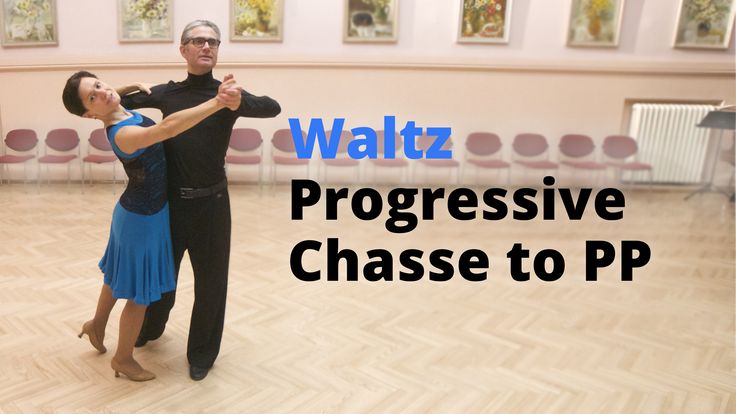
Start your exercise to waltz music. So you will quickly get used to and “catch” the rhythm. Move on to dance moves. Do them smoothly. Do not make sudden movements.
When stretching, give preference to the hands and toes. Squat on your toes, stretch your arms and fix them at shoulder level. Try to keep your shoulders in a normal position, do not raise them. They must be relaxed.
Now you are ready. It remains now to work out the dance moves with a partner.
Learning the movements
The basis for learning the waltz is just two movements. Once you master them, you can move on. So, let's learn the turn. When a couple dances a waltz, then the rotation movement is performed 360 degrees. First, learn this waltz movement on your own, and then in pairs.
Learning the first half of the movement:
- It is necessary to count: one-two-three, repeating the count three times to the music.
- Stand facing the line of dance.

- Feet must be in position #3.
- Take one step forward, start with the right foot (count - this is one).
- Then take a step with your left foot and turn to the right (count - two).
- When you turn around, you will stand with your back in the line of dance.
- Gently draw the right leg towards the left leg. Stand in position number 3 (count - three).
- Secure the movement. Do it several times.
- Remember that you are learning half a turn and therefore a 180 degree turn.
- Perform the movement on the toes, and completing it, stand on the whole foot.
- At the end of the movement, do a slight squat.
- Your movements must be gliding.
Learning the second half of the turn:
- We stand with our backs to the dance line.
- Legs in position #3.
- Step to the side from the left foot (count - one).
- Don't turn around yet.
- Place your right foot inside out (count - two).
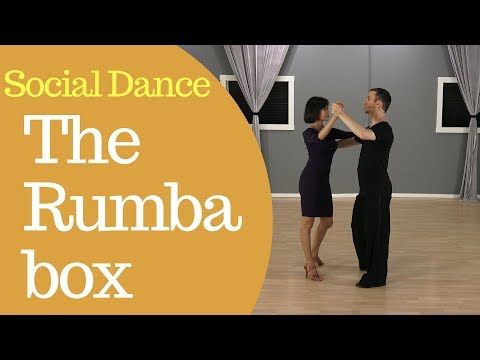
- Gently turn on your toes to the right side.
- Count - three and you are facing the line of dance.
- You have now rotated your body 180 degrees.
- Perform the movements several times.
- Take the first step diagonally, first back and then to the side. The leg must be reversible.
- Place the left heel close to the right foot when moving the second step.
- You should now have leg position #3.
- Keep your body weight on your left leg.
Making a full turn:
- Face the line of dance.
- Legs in position #3.
- Perform the first half of the turn - back to the line of dance.
- Turn right and proceed to the second half of the movement.
- You must return to the starting position.
- Practice, do the movement several times.
- After your body and legs get used to the movement, turn slowly at first, then faster and faster.
You have already learned how to make a turn on your own.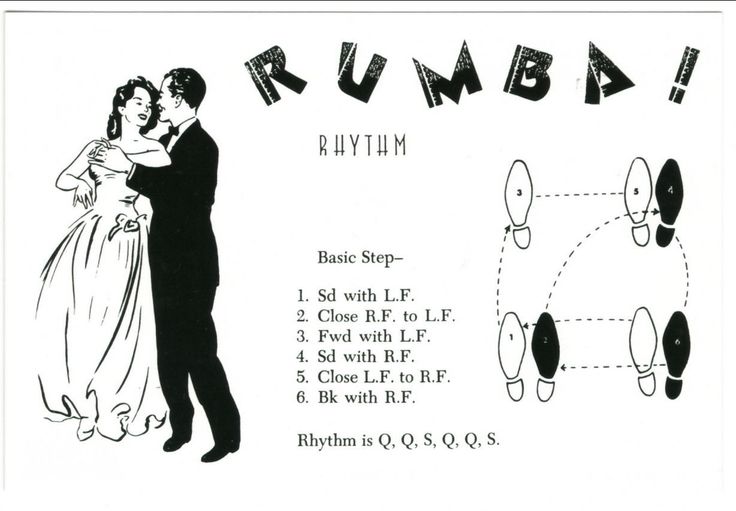 But this is only a small part of your success. Ahead - learning the turn in pairs. The girl starts the movement with the right foot (facing the line of dance), the boy - with the left (back to the line of dance). The girl dances the first half of the turn, the boy the second. That is, in a pair, partners simultaneously perform a turn, only different halves.
But this is only a small part of your success. Ahead - learning the turn in pairs. The girl starts the movement with the right foot (facing the line of dance), the boy - with the left (back to the line of dance). The girl dances the first half of the turn, the boy the second. That is, in a pair, partners simultaneously perform a turn, only different halves.
couple tips:
- Don't try to make a quick turn right away.
- Watch your feet.
- In the dance you need to move forward along the line of dance.
- Don't get hung up on doing the two parts of the turn, the movements should be smooth.
Learning the “track”
As you already know from the video lessons, it is impossible to dance the waltz in only one direction. Firstly, it is tiring, and the dance looks monotonous. Therefore, you need to learn how to perform one more dance movement - the “track”.
First you need to learn how to play it separately.
- Stand facing the line of dance.
- March, don't forget to count.
- Now repeat the track again, but on the half-toes.
- Knees should be tucked up.
- Take small steps.
- On the count of 3, each time lower yourself from the toes to the entire foot, at this moment the free leg moves forward.
- One track is three counts.
- Don't take big steps, they should be the same.
- Practice both movements with the right foot, and vice versa.
- Don't try to learn how to dance from the left turn right away, learn how to turn right first.
- You may feel dizzy at first - don't worry, it's a matter of habit. But there are also little secrets: while driving, do not look around, down or up, it is better to look ahead.
Try to devote as much time as possible to your studies. Of course, it doesn't have to be long hours of training. It is enough to devote one hour a day to classes.
Don't think you can learn to dance by watching TV and studying dance lessons. You need to learn how to dance live, how to move correctly to the music.
You need to learn how to dance live, how to move correctly to the music.
Little secrets
When learning any waltz, regardless of whether it is Vienna or Boston, you need to be able to feel the rhythm. Every dance teacher first of all teaches dancers to count. And you, do not forget about this important rule and count: one-two-three and so on three times.
For the dance to be harmonious, one should:
- Don't be shy about your partner - you need to touch each other.
- For the partner to bend his knees, slightly, put his right hand on the shoulder blade and thus support the partner's back.
- Hold.
- Don't forget to count.
- Do not confuse the position of the legs: start with the right foot - moving forward and to the right, with the left - back and left.
- If the partner started the dance from the left foot - the partner needs to start from the right - that is - to dance in a mirror.
- The partner's left hand rests on the partner's waist, while the right hand holds her hand.
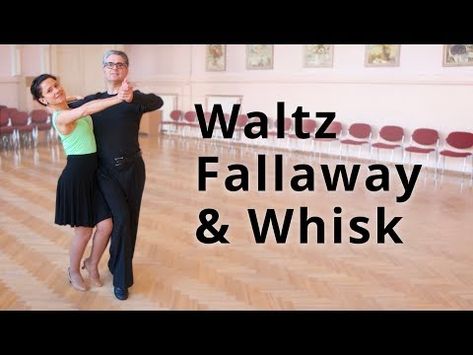
- The female partner places her free hand on the partner's shoulder.
Being able to waltz is amazing. Waltzing, a person becomes more plastic, his posture will improve, and the movements will be easy. The overall well-being of the body will improve, and what can we say about the emotional mood! Knowing how to waltz, you will gain confidence in your movements, become calmer, and every day you will dance the waltz better and better. Practice and success will be on your side!
Waltz is the most famous dance of all time. It does not age, despite its age. The whole secret of its enduring popularity lies in the fact that the waltz is both beautiful and not so difficult that everyone can learn how to dance it. And since this dance often accompanies us at various events, both solemn and entertaining, everyone should know how to dance the waltz correctly. And do not even doubt the usefulness of this knowledge!
What is a waltz? The origin of the dance
Despite the fact that the waltz has existed for more than two hundred years, it still cannot be called an ancient dance, which are considered to be polonaises, sarabandes and minuets. However, it is impossible to name the exact date of the waltz's appearance. The history of its origin, however, is also very vague. There are several versions of the origin of this amazingly beautiful dance. According to one of them, its progenitor is considered to be a swift walzer - a dance originally from Germany. According to another, a landler, who was popular among the peasants of Austria and Germany. Both of these dances had a three-part meter, were performed in pairs and in a circle.
However, it is impossible to name the exact date of the waltz's appearance. The history of its origin, however, is also very vague. There are several versions of the origin of this amazingly beautiful dance. According to one of them, its progenitor is considered to be a swift walzer - a dance originally from Germany. According to another, a landler, who was popular among the peasants of Austria and Germany. Both of these dances had a three-part meter, were performed in pairs and in a circle.
It is safe to say that the waltz came to us from the lower strata of the population, having previously been a dance of peasants and bourgeois. Very soon he migrated to the bourgeoisie, where he gained unprecedented popularity. He quickly fell in love and began to dance at all kinds of secular balls and receptions. Everything would be fine if it were not for the strong criticism of this dance, especially from the clergy, who considered it depraved and unacceptable in a decent society.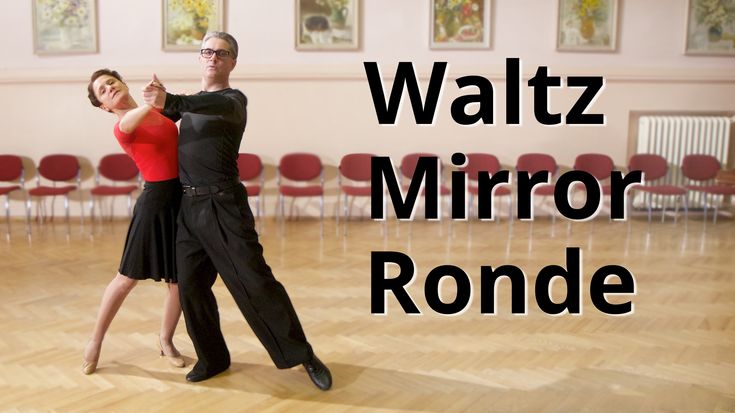 And maybe he would have disappeared altogether, unable to withstand the pressure of critics, if he had not been "picked up" by Strauss and other composers of the era of romanticism.
And maybe he would have disappeared altogether, unable to withstand the pressure of critics, if he had not been "picked up" by Strauss and other composers of the era of romanticism.
The era of romanticism
The era of romanticism began in Europe, which was marked by completely new trends in the field of art, music and poetry. Many famous composers of that time are beginning to work in this direction, creating gentle lyrical music. Schubert, Liszt, Mendelssohn, Chopin, Hoffmann, Rossini - they are all followers of romanticism. Johann Strauss, a famous Viennese composer, also began to write music in this direction. His famous waltzes are the treasury of world culture and its pride. In addition to the fact that the music of this direction was very soulful, it also turned to folklore, to what was popular among ordinary peasants.
That's why this dance became instantly popular, and every self-respecting nobleman began to learn how to dance the waltz, which very quickly won the hearts of millions of people. Queen Victoria especially fell in love with him, who patronized this dance at social events.
Queen Victoria especially fell in love with him, who patronized this dance at social events.
Types of waltzes
In fact, there are many varieties of this wonderful dance that are not so well known to the general public. Let's stop only on some of them.
- Viennese waltz - a waltz from the time of Johann Strauss, light, swift and graceful, characterized by a fast tempo.
- The Boston Waltz, on the other hand, is danced slowly and gracefully.
- Argentine waltz is a mixture of tango and waltz in the spirit of Mexican passions.
- Figured Waltz - this dance was created for professional dancers performing at various competitions and competitions. For those who are just starting to think about how to dance the waltz, this type is not suitable.
All these types of waltz share a three-part meter and a common outline of the pattern, which is complemented by different elements, depending on the type of dance.
Learning to dance the waltz
Probably every cultured and educated person should know how to dance the waltz. However, theoretical knowledge alone is not enough. Everything is decided by practice, which will quickly lead to the desired results. It is desirable to get practice in a dance studio, with an experienced teacher and a partner who will be right for you. The choice of the latter is especially important, otherwise the idea may not come true. You should be comfortable with this particular person with whom you should act in unison. You must feel it as yourself.
However, theoretical knowledge alone is not enough. Everything is decided by practice, which will quickly lead to the desired results. It is desirable to get practice in a dance studio, with an experienced teacher and a partner who will be right for you. The choice of the latter is especially important, otherwise the idea may not come true. You should be comfortable with this particular person with whom you should act in unison. You must feel it as yourself.
So, you need to understand what position the body should take, and master the basic figures. The body should take the initial stance. For a partner, this is: a straight back, a slightly turned head to the left. For the partner: a slight bend of the back, while the arms from the elbow to the elbow form a cross with the back, gracefully fall on the partner's arms. The position of the body is very important for the execution of basic figures, so you must always make sure to return to the starting position again and again.
How to dance the waltz: scheme
Waltz is not difficult to learn how to dance, you just need to understand the principle of movement. There are several basic figures, having mastered which, you will understand how to dance the waltz.
So, the change from the right foot is performed as follows: first, a step is taken forward with the right foot, which is a little springy, and there is a slight rise. On the count of two, the left leg moves to the left, and the body deviates slightly to the right. At the last count, the right foot is attached to the left. Then there are 3 more movements, but already back: the left naga steps back with a slight rise, the right steps to the right, and the body deviates to the left, at the expense of "three" the left foot is attached to the right.
There is also a change from the left leg, which is performed similarly to the previous one, only the legs change: from the left to the right, and vice versa.
In addition to these two figures, there are also turns: right and left.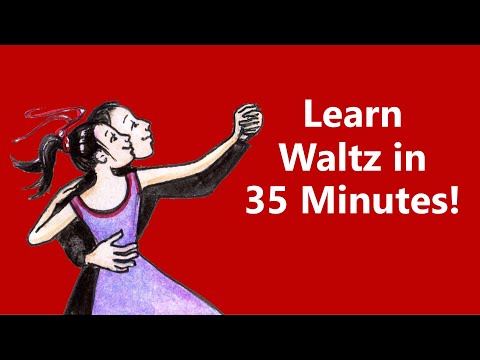 The principle of turns is absolutely the same as for changes, but only at the expense of "two" a small turn appears on the supporting leg.
The principle of turns is absolutely the same as for changes, but only at the expense of "two" a small turn appears on the supporting leg.
How to learn to dance the waltz on your own
It is possible to learn the waltz on your own, although it is still easier to do it with a mentor who will determine the initial level of the student and his abilities, and also choose a comfortable learning pace. But if for some reason it is not possible to find a teacher, then various training video aids will come to the rescue.
So take your time and patience and watch in a relaxed atmosphere the various tutorials on how to dance the waltz. After that, it is advisable to start training in front of the mirror. To begin with, you need to choose slow music in order to carefully work out all the details, and only then put compositions with a faster pace.
We dance the wedding waltz
The dance of the young has long been traditional at wedding celebrations.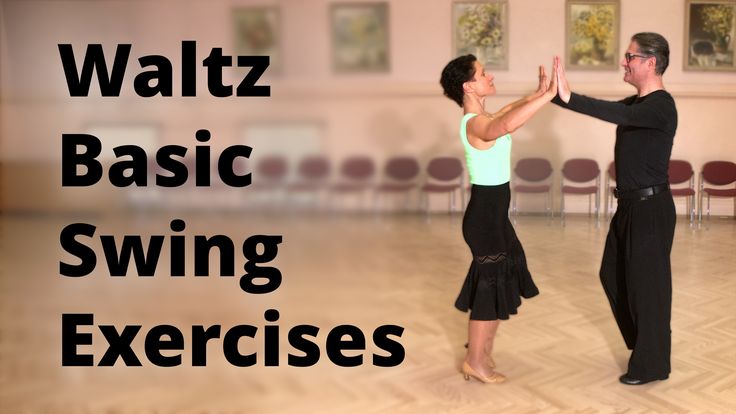 It looks very touching, beautiful and solemn at the same time. It is very pleasant later, when watching a video recording of a wedding, to remember dear, precious minutes and experience the same joy again. However, to know how to dance a wedding waltz, you need to prepare for this event in advance. A couple of lessons will not be enough, because the wedding takes a lot of strength, both mental and physical, young people can get worried and forget all the figures. In addition, this dance is also a pair dance, in which partners are responsible for each other and for the final result.
It looks very touching, beautiful and solemn at the same time. It is very pleasant later, when watching a video recording of a wedding, to remember dear, precious minutes and experience the same joy again. However, to know how to dance a wedding waltz, you need to prepare for this event in advance. A couple of lessons will not be enough, because the wedding takes a lot of strength, both mental and physical, young people can get worried and forget all the figures. In addition, this dance is also a pair dance, in which partners are responsible for each other and for the final result.
Any type of waltz can be used as a wedding waltz: Viennese waltz, Boston waltz, and tango waltz. The choice depends on the preferences of the young and the pace of learning. In any case, the waltz will greatly decorate this unforgettable and important day.
Conclusion
It's good that, despite the abundance of various modern dances, those types that have existed for a long time are not forgotten.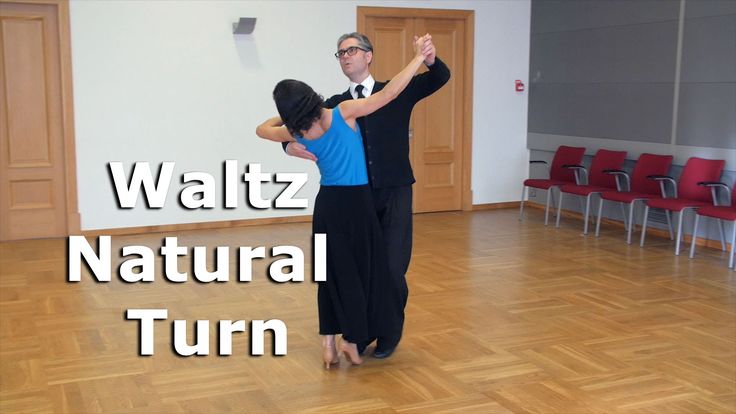 They are remembered, loved and willingly danced. The waltz is included in the mandatory program at many festivals and competitions of various levels, decorates any evening and pleases the hearts of people.
They are remembered, loved and willingly danced. The waltz is included in the mandatory program at many festivals and competitions of various levels, decorates any evening and pleases the hearts of people.
Changeable fashion sooner or later affects all spheres of public life, from appearance to pastime. And yet things remain unchanged in their value - like classical literature, symphonic music and ballroom dancing. Like a good mature wine, they reveal their meaning and significance over time, they show real charm. And even if they were once no less fresh and amazing than modern innovations and trends, but over the years and even centuries it has become obvious where the real style is and what is transient. Eternal values are eternal because over time they do not lose their attractiveness or relevance. It is no coincidence that to this day not a single solemn event, be it a city ball, prom, wedding or awards ceremony, is complete without the sounds of a waltz, to which graceful couples whirl.
Waltzing is a whole science for any of our contemporary, although even for our great-grandfathers it was the same ordinary process as a disco for today's teenagers. And yet everyone should learn how to dance the waltz correctly, regardless of age, taste and lifestyle. If only because it is a sign of a good upbringing and a strong cultural code that every educated person needs. And in general, everyone turns up at graduations and weddings at least occasionally, and why not prepare in advance so as not to lose face when beautiful music sounds and the host invites those present to the dance floor. And even if serious training requires lengthy training and classes with a choreographer, you can already understand the essence of the waltz, take an interest in its theoretical background and the basic rules of dance. What we suggest you do before learning how to waltz correctly.
Waltz: types, history and modernity
Waltz and its variations is not as old a dance as one might think. And although the folk dances of the Czech Republic and France are considered to be its prototype, the first dance movements similar to the modern standard came into fashion as early as the end of the 18th century in Austria and, thanks to their entertainment orientation, quickly spread to other European countries. Even then, the waltz acquired the status of the main ballroom dance, but no one even thought about its modern significance and versatility. On the contrary, until the beginning of the 20th century, the ¾ waltz rhythm accepted today did not even exist, and at the same time several forms existed, the size of which was 2/4, 5/4 and even 6/8. And even today there is no single strict restriction on the concept and performance of the waltz, and in a general sense this concept is interpreted as a general name for ballroom dancing in a closed position. But it was the waltz in ¾ time that became the standard and model for creating not only its own varieties, but also other ballroom dances.
And although the folk dances of the Czech Republic and France are considered to be its prototype, the first dance movements similar to the modern standard came into fashion as early as the end of the 18th century in Austria and, thanks to their entertainment orientation, quickly spread to other European countries. Even then, the waltz acquired the status of the main ballroom dance, but no one even thought about its modern significance and versatility. On the contrary, until the beginning of the 20th century, the ¾ waltz rhythm accepted today did not even exist, and at the same time several forms existed, the size of which was 2/4, 5/4 and even 6/8. And even today there is no single strict restriction on the concept and performance of the waltz, and in a general sense this concept is interpreted as a general name for ballroom dancing in a closed position. But it was the waltz in ¾ time that became the standard and model for creating not only its own varieties, but also other ballroom dances.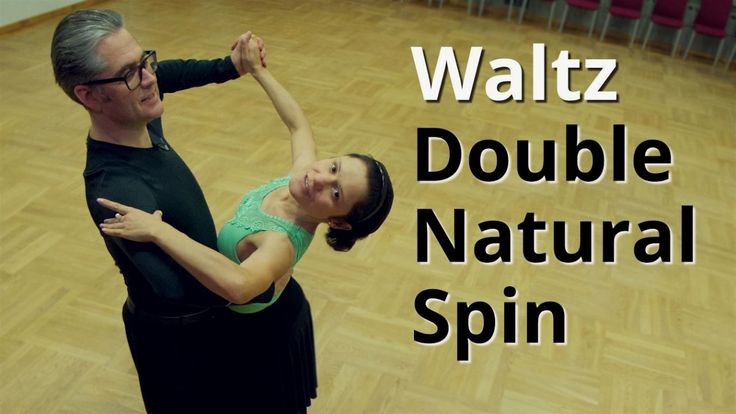
In order not to go into details that are important mainly for professionals, we note that all waltz forms known and performed today can be conditionally divided into two groups: fast and slow. At international competitions, the waltz standard with closed dance positions has been adopted (the minimum distance between the bodies of partners, allowing movement), but you can dance it in an open position if we are not talking about a strict offset. For example, the European program of ballroom dancing competitions includes as many as seven movements of the Viennese (fast) waltz, as well as slow and figured waltzes. They differ in the number of musical beats per minute, that is, in rhythm, and outwardly this is manifested in the smoothness of movements. Thus, it can be called separately:
- Viennese waltz - he's fast. This type of waltz is striking in its swiftness, when the couple constantly changes the direction of the turns, then to the right, then to the left, quickly spinning, changing the pace.
 It is impossible to perform these steps well without a deep mutual understanding and feeling of partners. At the same time, it is the Viennese waltz that is considered the most conservative form and zealously preserves ballroom traditions since the 19th century. The Viennese waltz does not allow for mannerisms or strong body bends - on the contrary, the dancers' bodies should be tense, toned and strictly graceful.
It is impossible to perform these steps well without a deep mutual understanding and feeling of partners. At the same time, it is the Viennese waltz that is considered the most conservative form and zealously preserves ballroom traditions since the 19th century. The Viennese waltz does not allow for mannerisms or strong body bends - on the contrary, the dancers' bodies should be tense, toned and strictly graceful.
- Slow waltz , also known as the Boston Waltz and the English Waltz, is considered to be a completely independent dance. Only a beginner can confuse it with the Viennese waltz, because both the tempo and even the sound of the music of these dances differ from each other. In a slow waltz, the partners' movements are coordinated, but not simultaneous, but sequential: the partner repeats the partner's movements with a delay of one measure. This requires great discipline and precision of movement from both dancers.
- Argentine waltz is the most democratic type of waltz, combining elements of fast waltz and Argentine tango, but keeping the tempo at ¾.
 This ballroom dance can be found under the name of the tango waltz, but outwardly it still looks more like a classical tango than a waltz. The Argentine waltz is much rarer than the two classical forms, so beginner dancers should pay more attention to them than to the Argentine waltz.
This ballroom dance can be found under the name of the tango waltz, but outwardly it still looks more like a classical tango than a waltz. The Argentine waltz is much rarer than the two classical forms, so beginner dancers should pay more attention to them than to the Argentine waltz.
How to learn to dance the waltz: lessons for the prom and wedding
Being well aware of the fact that dance, like any other form of bodily self-expression, cannot be taught in absentia and in words, we will still take the liberty of introducing you to the basics of this art. If only because a correct understanding of the essence and fundamental principles of any process is already the key to its development and subsequent improvement. You can take a full course of study or take a few lessons from a choreographer-teacher, and you can’t even do without it if you want to dance easily and confidently. But in any case, you will come across certain points that you will learn about during classes.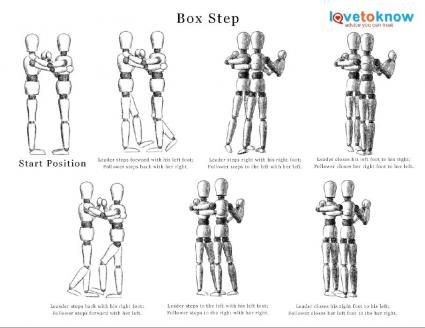 In order to be ready and mentally tune in for the upcoming workouts, remember and use these tips:
In order to be ready and mentally tune in for the upcoming workouts, remember and use these tips:
- Waltz is a partner dance, so you can't do without a partner. To start learning, anyone can play this role: ask friends, relatives or even parents for help. The gender of your "training" partner does not matter, the main thing is that he performs the necessary movements according to the position in the figures.
- Choose the music for your workouts that suits your taste so that you enjoy listening to it and want to continue training. Melodies corresponding to the rhythm of one or another type of waltz are not difficult to find and download on the Internet; there are many collections for dancers and students. Turn it on and listen to it even when you are not going to dance - just get used to the sounds, their modulations and tempo. Then it will be easier to join the flow of movements.
- The earlier a skill is formed, the faster and stronger it is acquired, therefore, if you want your children to have no problems learning ballroom dancing in the future, invite them to study the waltz with you or in a separate children's / teenage group.

- A large number of training videos are available both for sale and freely available on the Internet. If by type of perception you are visual, then you can use them. Such video lessons are a bit like morning aerobics on TV and help you get an idea of how this or that dance figure should look in motion.
- Find a suitable place to train, whether it be a rented gym or just a large room in your home. The main thing is that there is a mirror large enough on the wall, allowing you to see yourself in full growth and in motion.
All of these suggestions are good if you have time to prepare. They can be used by high school students who already know that they will have to perform a farewell waltz at the graduation party. They will also come in handy for newlyweds who plan to decorate their celebration with a beautiful and gentle waltz, which will be a wonderful gift for guests and each other. All these situations involve pre-training and the opportunity to contact a teacher, while improving your results with home workouts.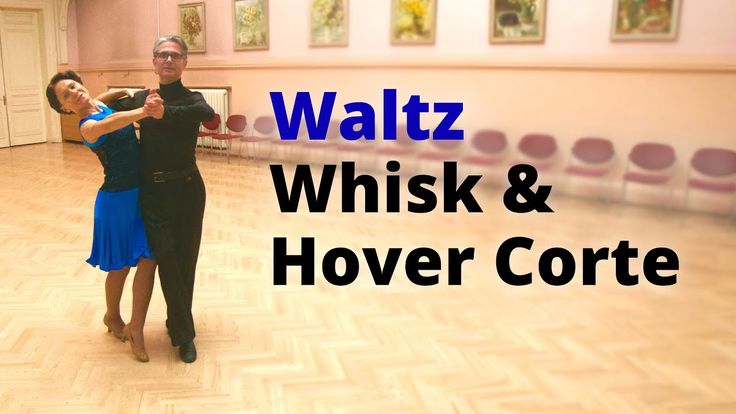 But what if the need to dance the waltz took you by surprise? At a party or at a corporate event, you were invited to dance, it’s inconvenient to refuse, and the orchestra is already playing the first chords. The main thing - do not get lost and do not be shy, you are not a professional dancer and are not required to thoroughly master the waltz technique. Just remember these prompts and follow them as best you can. In most cases, this will be enough to dance the waltz:
But what if the need to dance the waltz took you by surprise? At a party or at a corporate event, you were invited to dance, it’s inconvenient to refuse, and the orchestra is already playing the first chords. The main thing - do not get lost and do not be shy, you are not a professional dancer and are not required to thoroughly master the waltz technique. Just remember these prompts and follow them as best you can. In most cases, this will be enough to dance the waltz:
Having learned these tips and not being too lazy to spend time and effort on conscientious training, you will get every chance to become the king and / or queen of the ball, even if you have never been fond of ballroom dancing before, and the waltz in particular. Moreover, it is no coincidence that the waltz is considered one of the most popular and beloved dances in the whole world. With the right attitude, as well as an easy and relaxed technique, he is able to bring real pleasure to both dancers and spectators. So leave doubts and fears and finally learn how to waltz correctly. It does not matter how often you happen to use this skill in practice. The main thing is that to the sounds of this harmonious, flowing music you will feel confident and free, develop and emphasize your plasticity and grace. And do not doubt that today, and tomorrow, and even years later, the waltz will remain a beautiful, gentle and romantic dance that attracts attention and arouses the favor of people with good taste.
It does not matter how often you happen to use this skill in practice. The main thing is that to the sounds of this harmonious, flowing music you will feel confident and free, develop and emphasize your plasticity and grace. And do not doubt that today, and tomorrow, and even years later, the waltz will remain a beautiful, gentle and romantic dance that attracts attention and arouses the favor of people with good taste.
How to learn waltz steps?
Nowadays, the waltz is widespread in all countries, including Russia. Waltz is played at almost every social event, it is considered mandatory at school graduations and weddings (which is why the dance was given the name "wedding"). That is why the ability to waltz and perform different combinations of waltz steps can be useful in our time. Waltz lessons, of course, should be taken from real dance teachers, but if this is not possible, and you need to learn the movements in a short time, you can use our publication. The dance is elegant and easy to perform, and in this article, we'll take a look at how to do the Waltz steps for beginners.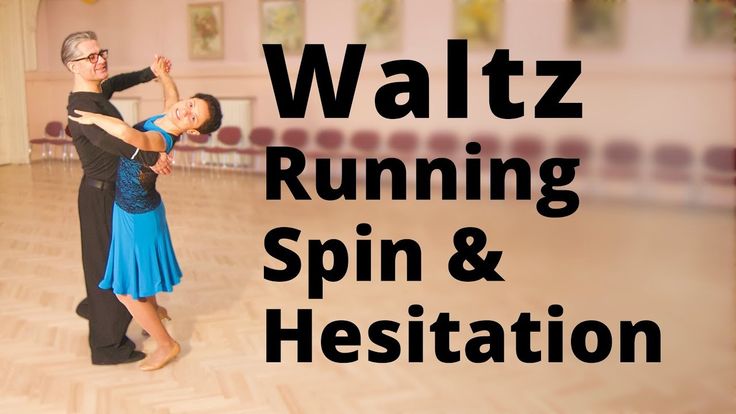
The history of the waltz
The waltz is a classic pair dance whose origins go back to the end of the seventeenth century. The name comes from the German walzer - "to spin". Despite the fact that the dance appeared in Germany and was considered peasant, it was first performed in Europe, in Vienna. In Austria, he gained fame among the nobility. At that time, dance was not just an element of art, it was a must for performance among the aristocracy. Waltz lessons were taught from an early age to girls and boys who belonged to the nobility.
From the beginning of the nineteenth century, dance rapidly spread throughout Europe and became more and more diverse. New types and combinations of waltz steps appeared, in many countries a modified version was considered a national dance. At the beginning of the twentieth century in England, such a well-known form as the slow waltz began to be performed. Despite its incredible popularity, any deviation from the classical style was negatively perceived by the old European aristocracy.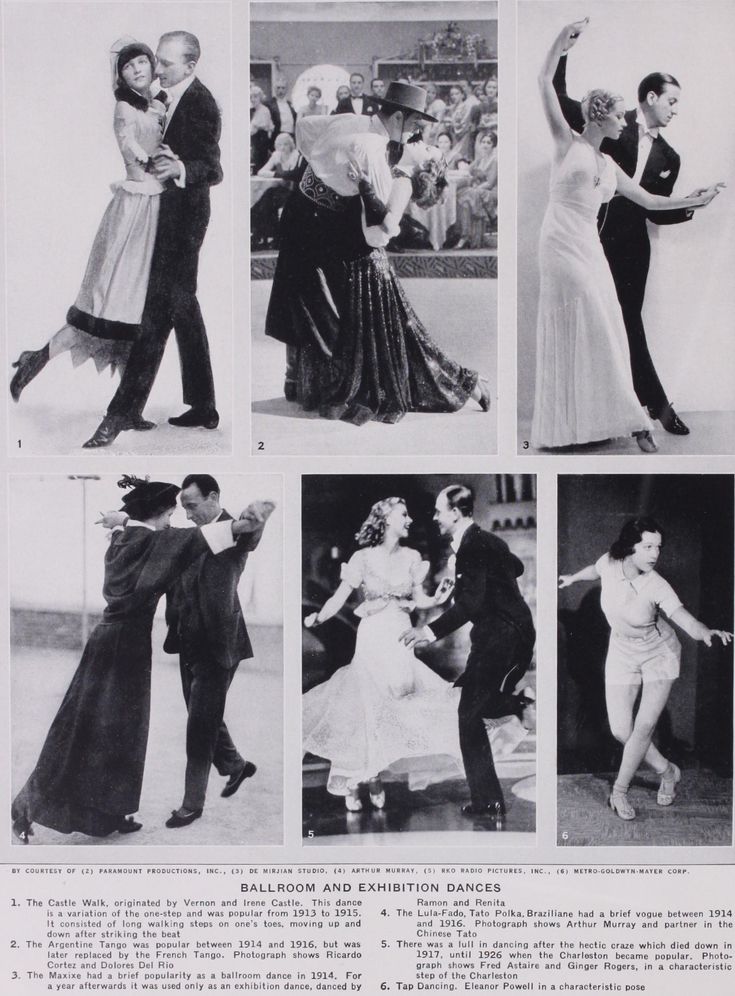 In Russia, the appearance of dance coincided with the reign of Catherine II and Paul I. At first, the waltz was not approved by the rulers and the nobility, it was even banned, but over time it also gained fame. However, the waltz underwent special changes after the Second World War. In the dance, the basic character of movement, steps and turns has changed, but there are more opportunities for the development of dance figures.
In Russia, the appearance of dance coincided with the reign of Catherine II and Paul I. At first, the waltz was not approved by the rulers and the nobility, it was even banned, but over time it also gained fame. However, the waltz underwent special changes after the Second World War. In the dance, the basic character of movement, steps and turns has changed, but there are more opportunities for the development of dance figures.
Waltz variations
Despite the fact that the Viennese waltz is considered to be the ancestor of the dance, performed with fast side steps, its other variations are also very common in the world. In total, there are about two hundred and fifty types of this dance. The most famous variants are:
- English (slow) waltz.
- Viennese (fast) waltz.
- Russian waltz (waltz in two steps).
- Figured waltz.
- Japanese waltz (mitriso waltz).
- Argentine waltz (tango).
Basics
Waltzing is quite simple if you understand how to dance correctly.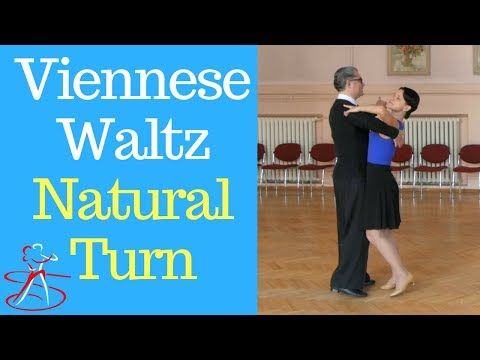 Waltz steps are carried out according to a certain pattern. First of all, imagine a square - you will move along such a trajectory during the dance. The dance is led by a man, his left hand should be on the partner's waist, and his right hand should be holding her hand. The woman's left hand rests on the man's shoulder. The movement in the waltz begins with the right foot, ends with the left and proceeds counterclockwise. But do not forget that the woman moves in the opposite direction of the man, that is, her steps are made clockwise and start with the left foot. The main step of the waltz is the side step, it is very easy to learn, but remember that for a beautiful performance of the dance, the steps must be light and sliding. To do this, first slide with the ball of your foot, then go to the toe and only then lean on the entire foot. The first step is big, the second and third are small. The movements should be relaxed and smooth, and do not forget to smile, then you will achieve the desired effect.
Waltz steps are carried out according to a certain pattern. First of all, imagine a square - you will move along such a trajectory during the dance. The dance is led by a man, his left hand should be on the partner's waist, and his right hand should be holding her hand. The woman's left hand rests on the man's shoulder. The movement in the waltz begins with the right foot, ends with the left and proceeds counterclockwise. But do not forget that the woman moves in the opposite direction of the man, that is, her steps are made clockwise and start with the left foot. The main step of the waltz is the side step, it is very easy to learn, but remember that for a beautiful performance of the dance, the steps must be light and sliding. To do this, first slide with the ball of your foot, then go to the toe and only then lean on the entire foot. The first step is big, the second and third are small. The movements should be relaxed and smooth, and do not forget to smile, then you will achieve the desired effect.